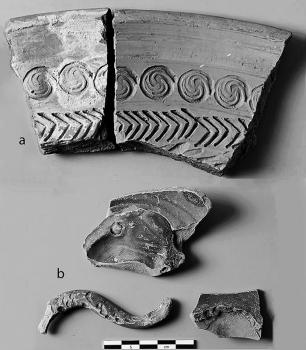American Journal of Archaeology | The Journal of the Archaeological Institute of America
You are here
From Formal to Technical Styles: Production Challenges and Economic Implications of Changing Tableware Styles in Roman to Late Antique Sagalassos
January 2017 (121.1)
From Formal to Technical Styles: Production Challenges and Economic Implications of Changing Tableware Styles in Roman to Late Antique Sagalassos
Changing tableware styles between the Roman Imperial and Late Antique periods have attracted significant attention recently, with socially constructed interpretations of consumer demand that view changing vessel shapes, sizes, and decoration in relation to communal dining practices of late antiquity. Building on that research, this study approaches such stylistic changes from the perspective of the important, yet less investigated, figure of the producer on the workshop floor. In comparing two production dumps from the tableware production center at Sagalassos (southwest Turkey), one dated to the second century C.E. and one to the late fifth to early sixth century C.E., this study identifies shifts in the technical and technological styles between the two periods that relate to changes in vessel form, size, and finishing. Having identified several critical technical changes in the Late Antique production at Sagalassos, this article then explores the degree to which changing vessel styles affected manufacturing output, production organization, and workshop economy, consequently demonstrating the dynamic response by an ancient local industry to changing technical and social contexts through several centuries of activity. Using detailed classifications and quantifications of manufacturing waste, this research also develops new methodologies for the analysis of ancient production sites.
By Elizabeth A. Murphy and Jeroen Poblome
American Journal of Archaeology Vol. 121, No. 1 (January 2017), pp. 61–84
DOI: 10.3764/aja.121.1.0061
© 2017 Archaeological Institute of America


